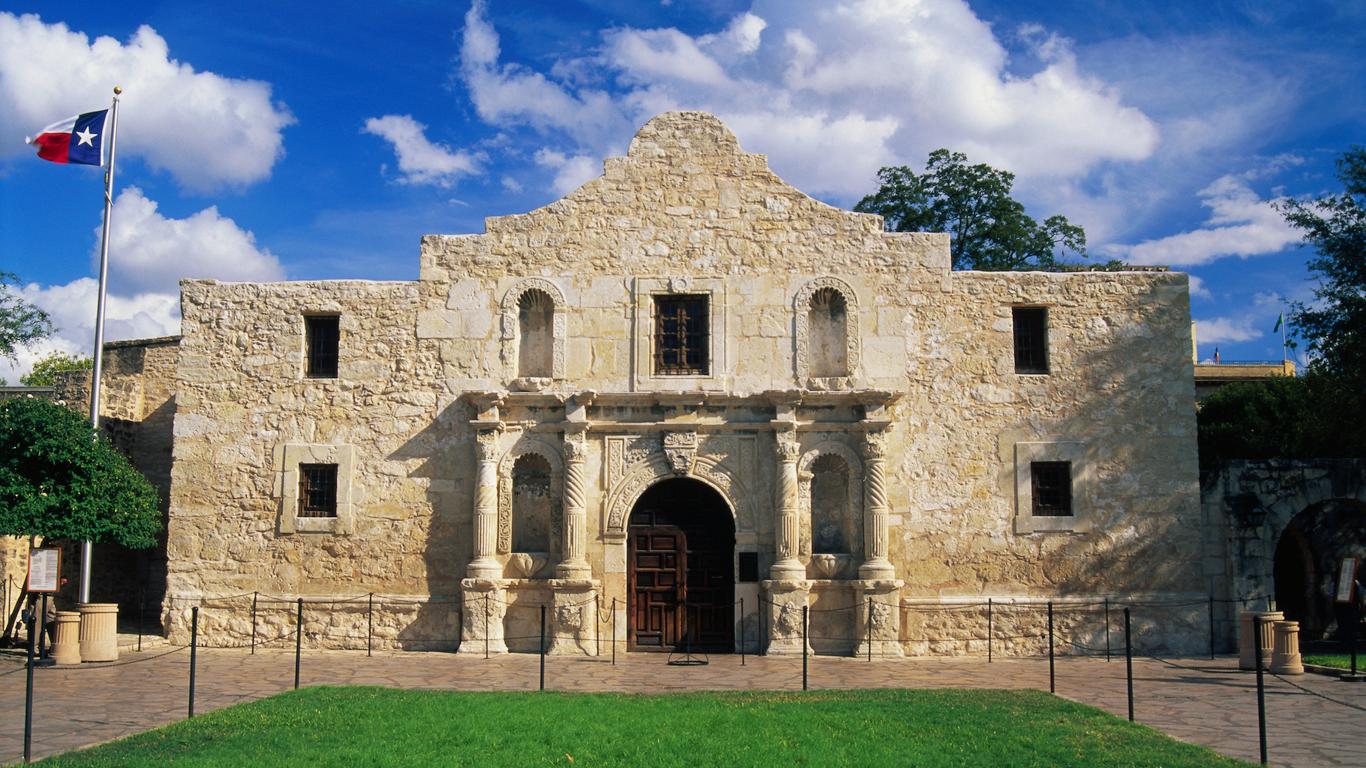Every year, over 2.5 million people visit the Alamo in San Antonio, an original, early base of the Spanish missions in Texas and the fortress site for the 1836 Battle of the Alamo. It is now a museum and historic district as well as an iconic landmark of Texas and a reminder of national history, popular with demonstrations and events within the city. The Alamo is a 16,996 metre squared complex, originally built for Native American converts to Christianity and was turned into a battle scene, which now stands as a reminder of sacrifice for liberty and independence.
The Alamo invites visitors to tour its buildings and grounds, including the chapel and Long Barracks that is full of weapons and paintings of the Texas Revolution and witness a collection of artefacts telling the story of the site’s history. In the main building of the compound, there is a huge mural called the Wall of History, representing the history of the Alamo, ranging from its time as a mission to modern day use. Visitors can also learn about the Battle of the Alamo first hand by exploring the land on which it took place and hearing the detailed recollections from expert historians. By walking around the outside walls, visitors can appreciate the size of the complex and its significant presence within the city of San Antonio.
The Alamo is in the heart of the San Antonio city and is easily noticeable, where visitors can follow directions to a tourist information centre. There is an Alamo Plaza bus stop right outside the complex, and the closest airport is a 20-minute drive or a one-hour journey via public transport.
Once a Spanish mission building for Christian converts in the 18th century, the Alamo became a military fortress in 1803. In the time of the Texas Revolution, local soldiers occupied the compound in defiance of the Mexican General Antonio Lopez de Santa Anna and defended the land during a thirteen-day siege. Eventually, Mexican troops killed all ten Texian soldiers, who died while repeating, “Remember the Alamo”, a phrase still upheld by the modern day museum.





